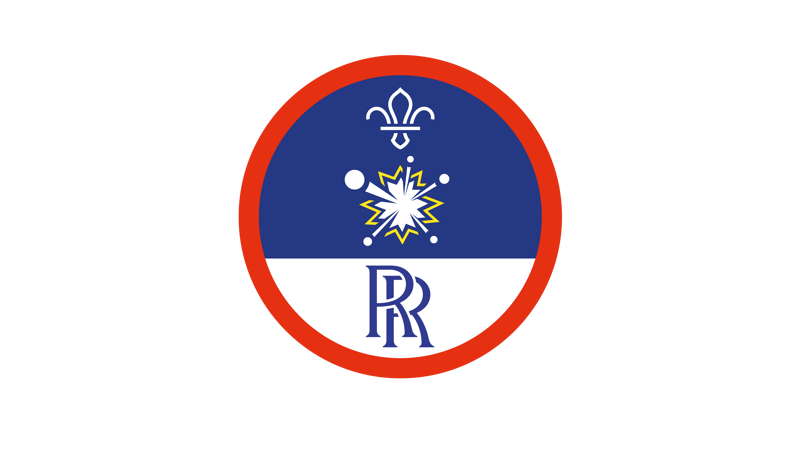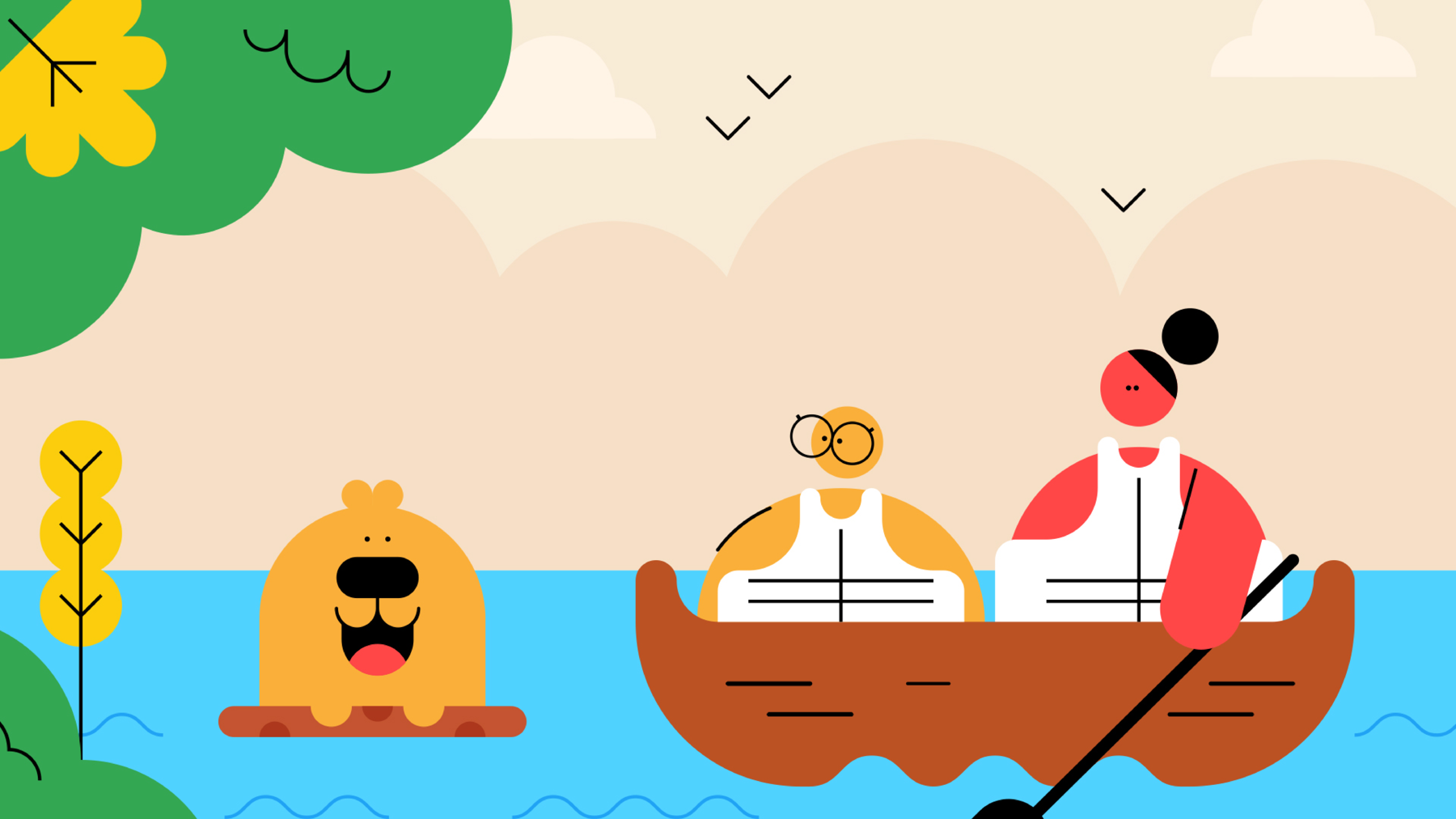
What floats your boat?
You’ll need
- Specific equipment for experiments (see instructions)

Before you begin
- This activity is in two parts. Choose one challenge, or run both across multiple sessions, on a half-day or at a camp. Both parts of the activity will need to be run somewhere where it doesn’t matter if things get a bit wet.
- Bring along a selection of craft materials for each group to make a boat out of. You could use things left over from other activities, or things that can be dismantled and used again. The only rule is that all of the materials have to be the same for each group, and accessible for everyone.
- Anyone working towards their Scouts Scientist Badge could either plan and run their own experiment or use what they learn to share the science with others after this activity.
- You could request a STEM Ambassador to help deliver science, technology, engineering and maths (STEM) activities in the programme. To get started, go to the STEM Ambassador website and register as a ‘youth and community’ group, so you can share requests for support.
- Why not share your screen and play the video to introduce the activity?
- Plan ahead and let everyone know what equipment they’ll need to do this activity online at home – ‘Ship shape challenge’ might work best online.
- You could simplify the activity and try some simple origami boat designs in a sink full of water at home.
- Check out the advice on using Zoom and other popular digital platforms and the guidance on being safe online.
Ship shape challenge
You will need
- Craft materials
- Sticky tape
- Scissors
- Pens or pencils
- Scrap paper
- Large bucket or container
- Access to water
- Weights, like coins, marbles or pebbles
- Two forces act upon the kayak and the paddler. Gravity, which pulls downward with the weight of the boats. And upthrust, which is an upward force exerted on the boats by water. When upthrust is equal to or greater than the weight of the water displaced by the boat, the boat floats. If not, you sink!
- We describe things that float as being ‘buoyant’.
- The more water you can displace, the greater the upthrust and, in theory, the more weight the boat should hold. Large surface areas on and beneath the surface of the water are the best way to displace it.
- Heavy things sink unless they follow these rules. The heavier it is, the more water it must displace to stay buoyant. Adding weight means that the boat has to sink lower to displace enough water to hold its position. If it keeps sinking, then it can’t receive enough upthrust to overcome its weight.
To watch in full screen, double click the video
- Everyone should split off into groups of three or four people. Explain to everyone that they’ll be using what they’re given to make a boat that can hold some weight. Groups should try to make a boat that can hold as much as possible.
- Each group should find a spot to work, where they can come up with a plan for their boat. The person leading the activity should give each group the same selection of resources to choose from, it’s a good idea to limit the amount of sticky tape groups can use too.
- Everyone should start to build their boats. Agree upon a design and think how you could make it from the resources at your disposal. Give everyone about 15 minutes building time.
- Fill a large container with water and place it somewhere central. Everyone should come and test out their designs one group at a time. Carefully place the boat on the water and add some weights a little at a time until the boat sinks.
- One person in each group needs to count how much weight was added and record this data. Remove boats from the water after they sink. Make sure each group uses the same weight denominations. For instance, you could use all 2p coins or all marbles.
- Gather and discuss which boats performed the best. Talk about why some designs worked better than others. Think about boats like kayaks, canal boats and tugs, and discuss why different boats need to be the shape they are.
Boat race challenge
You will need
- Craft materials
- Sticky tape
- Scissors
- Pens or pencils
- Scrap paper
- Plastic guttering, with sealed off ends
- Access to water
- Fan or hairdryer (optional)
- Stopwatch (optional)
- The shape of a boat affects the drag acting on the boat as it moves through water. Drag is caused by friction in the water and ‘wave-making resistance’, which is caused by how the boat pushes water out of the way of the hull. Narrow boats are designed to carve through waves and ripples, counteracting this. Frictional drag has more effect, so hulls need to be both slim and as smooth as possible to keep the boat on the move.
- Some boat hulls are designed to ride on top of water. This is called ‘planing’. Powerboats, designed to move at speed and carry little cargo, usually have planing hulls so that they can skim speedily across the water surface. At sea, these are V-shaped, for a smoother ride on choppier water, but lake and river craft are often flat-bottomed for extra stability.
- Some boat hulls are designed to displace water on and beneath the surface. These are ‘displacement hulls’, and these boats sit lower in the water as a result, giving them space inside for cargo. They include canoes, which have round-bottomed hulls, sailing boats and tankers, which often have multiple hulls for maximum stability.
- Sail boats need to hold their sail perpendicular to (in front of) the wind, depending on the direction it’s coming from. Then they’ll move in the same direction. The wind can blow sail boats sideways too, which is why a keel is important to maintain a steady, stable course by creating a countering force. Here’s more on how.
- Everyone should split off into groups of three or four people. Explain to everyone that they’ll be using what they’re given to design and make a fast boat. Groups should try to make a boat that’s faster than everyone else’s. You could also explain that streamlined boats will move faster through the water, as they create less drag, but boats also need to be large enough to benefit from upthrust and stay afloat.
- Each group should find a spot to work, where they can come up with a plan for their boat. The person leading the activity should give each group the same selection of resources to choose from.
- Everyone should start to build their boats. Agree upon a design and think how you could make it from the resources at your disposal. Give everyone about 15 minutes building time. Check out the Make a paddlecraft activity for more inspiration, think about things like the shape of the hull, size or length of the boat and its surface texture.
- Depending on where you’re running the session, you’ll need to find a way for the boats to race.
- On camp, you might be able to find a natural waterway to use, providing you don’t leave any boats or materials behind.
- If you can visit a local pool or pond, these could work well too.
- If you’re at your meeting place, fill a sealed length of guttering or pipe with water.
- Everyone could use fans or hairdryers to propel their boats from one end to the other, with boats racing two at a time in a tournament format to decide a winner, or against the clock in a time trial format to see who gets the quickest time. Be especially careful when using electrical appliances near water. Paper fans are probably safest to use when you’re racing. This needs to be factored into your risk assessment.
- Gather and discuss which boats performed the best. Talk about why some designs worked better than others. Mention the different hull designs and how they affect the way the boats moved on the water. Think about why different shapes moved more or less quickly across your course, and the way in which they were propelled.
Reflection
The crew of a ship have to work together to make their boat work. Each sailor has a different role to perform. Even so, sometimes things can go wrong and leave you all at sea! How did you sort out who did what in your team, and how did everyone work together to complete the tasks? Would you do anything differently in your team next time around?
Lots of us enjoy activities on the water like kayaking, canoeing and white water rafting. We’ve just looked at some of the science that makes these activities possible. What will you look out for the next time you’re going out on the water? If you can, get a look at the hull of your craft, note the shape and materials used to make it. When aboard, use what you know to dictate how you paddle, and see if you can use your knowledge of buoyancy, drag and ship shapes to change how you move.
Safety
All activities must be safely managed. You must complete a thorough risk assessment and take appropriate steps to reduce risk. Use the safety checklist to help you plan and risk assess your activity. Always get approval for the activity, and have suitable supervision and an InTouch process.
- Science
Supervise young people, and only do science activities that are advised and age appropriate for your section. Test activities first, to make sure you’re confident you can lead them safely. Use protective clothing where necessary.
- Scissors
Supervise young people appropriately when they’re using scissors. Store all sharp objects securely, out of the reach of young people.
- Rubbish and recycling
All items should be clean and suitable for this activity.
- Water games and activities
Be careful when doing activities with, in, or near water. Check surfaces and reduce the risk of slipping where possible. Make sure you have appropriate supervision for this activity.
- A limit on the amount of sticky tape each group can use will make the challenge tougher. Using all-natural building materials for the boats is also an option.
- Adding sails or stabilisers to the boats could make them move or float easier, but will require more time to build. Anyone with a knack for boat design could try and come up with a way of controlling their boat and sail to make a boat that can sail upwind.
- Make sure everyone has everything they need to complete the tasks in this activity. Each person should have a role in their group that’s suitable, whether that’s focused more on design, testing or building. Assign specific roles where necessary.
- Groups could be given extra time to complete their build, if possible.
All Scout activities should be inclusive and accessible.
Now everyone knows how a kayak stays afloat, groups could do some research to find out the science behind paddling and moving a kayak around in the water. Canoes and kayaks move through the water due to force applied with the paddles and Newton’s second and third laws of motion. They also use buoyancy to help steer and perform tricks on the water. This video demonstrates this.
Rafts work on similar principles. Anyone who enjoyed building boats might enjoy raft-building. Check out our Traditional rafting page for some more information.
Agree upon design and testing criteria with everyone. Everything from the materials used to the means of propulsion can be chosen by those taking part.
